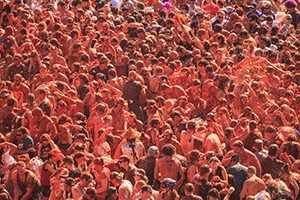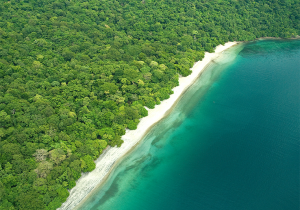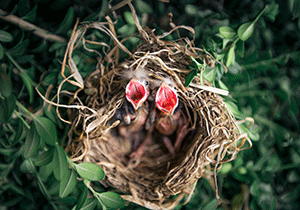3 super science experiments to try at home!
Yep, they really WORK!
We owe a lot to science, I mean, just try and imagine a world without it… No televisions, no computers – not even ice cream!
If you’re mad about science, try having a go at creating some of these exciting experiments put together by Hazel Rymer, Lead Educator of free, online course, Basic Science: Understanding Experiments. They’ll give you a good understanding of how science works, and you’ll have fun, too!
Just make sure you get a parent or guardian to help you.
Science experiments for kids
Grow your own greens!
All plants need water, sunlight and a home to live in (usually in the ground), but some plants, like cacti, need less water than others (that’s why they grow in the desert). Here you’ll explore how plants grow in different environments.
What you’ll need
-1 packet of radish/cress/mustard seeds
-3 small plastic pots
-Soil to fill the 10 pots
-Tap water
-1 measuring cylinder
-1 notebook
-1 pen
Step 1
Fill the three pots with the same amount of soil, and place approximately five seeds in each pot.
Step 2
Add 25ml of water to each pot.
Step 3
Place one pot in the cupboard, one in the fridge and one on your windowsill.
Step 4
Each morning and evening for about a fortnight, add 25ml of water to the pot, and make a note of anything you notice about your plants.
Why it works
You should expect to see the healthiest looking plant has been grown on the windowsill. This is because while all the seeds had soil and water, only the seeds on the windowsill had access to light, a key component in order to grow.
Rocking rock formations!
There are three types of rock: igneous, sedimentary, and metamorphic. Igneous rocks form as a result of the cooling of magma (lava). When magma cools and hardens, it becomes a rock. Sedimentary rocks are a mixture of other materials that have been re-deposited, and re-solidified through compression and cementation. Metamorphic rocks are types of existing rocks that have been altered in form as a result of changes in heat and pressure. See which ones you can identify in this experiment!
What you’ll need
– A magnifying glass
– A mixture of rocks found from as wide an area of locations as possible
– Good lighting (so you don’t’ strain your eyes)
– Sticky notes to label each rock
– Notebook
– Pen
Step 1
Label each rock with a number so when you record your findings, you can easily identify which rock you’re commenting on.
Step 2
Choose a labelled rock.
Step 3
Look at it through the magnifying glass.
Step 4
Look carefully for crystals and other structures within the rock that could determine what it is.
Step 5
Make a note of what you can see from each rock using your notebook of your findings.
Why it works
Igneous rocks are easily identifiable because they contain angular crystals. The longer the igneous rocks take to cool and crystallise, the larger the crystals will become. Sedimentary rocks generally have more of a layered appearance because of the different rock types being pressed together. Metamorphic rocks can look layered, but the layers often aren’t continuous and they tend to be very small scale. The rock will look like one fused mass rather than separate crystals.
Have a think, what would each rock be best used for? Can you identify where we use rocks?
See how plants ‘drink’!
The aim of this experiment is to prove that plants do take in water.
What you’ll need
– 2 sticks of celery or white-petal flowers, (such as carnations)
– 2 empty glasses
– A food colouring of your choice (red or blue is best)
– Knife (your guardian will need to use this)
– Water
– Notebook
– Pen
Step 1
Using a sharp knife, (ask your guardian to help) cut roughly 2cm off the bottom of the celery sticks.
Step 2
Fill one of the glasses roughly 1cm high with food colouring and add an extra 0.5cm of water to it. Fill the second glass with just 1.5cm of plain water.
Step 3
Place the freshly chopped end of one of the celery sticks (or carnations) in the water.
Step 4
Place the other in the clear water and leave overnight.
Results
You should find that the leaves of the celery (or carnations) have become a colourful work of art! This proves that the plant has taken up the coloured water you made.
Basic Science: Understanding Experiments is a free online course available on FutureLearn from the 8th August 2016. You’ll even can get a Statement of Participation for completing it!
You can also share your experiments online as you go using the hashtag #FLSciExp16.
MORE STUFF LIKE THIS

10 Top Tomato Facts!

COSTA RICA: Guardian of the Future!

15 fascinating facts about Sir David Attenborough













LEAVE A COMMENT
THANK YOU
Your comment will be checked and approved shortly.
WELL DONE,
YOUR COMMENT
HAS BEEN ADDED!
COMMENTS
Hi
lit
Can you post the mug cake one!!!
Love it!
they actually work. im impressed.
OMG! Tried the flower one at school and it worked so well!! Don't use faint colours though like pink or yellow. They don't work but we used a white rose and blue food colouring!! It worked so well! I RECOMEND IT!!!
WOW
i luv experimenting
I all ready did the cress experiment when I was in year1/class2!
Im definitely going to try the last one its so cool!
wow what a nice experiment
wow what a good experiment i will do this in my science exhibition
i love making experiments! ill try to dye some carnations for my birthday party.<3
best trick ever espesily the food colouring one
cool especially the flowers/celery
cool experiments ive tried some of them with my grandma in her garden
Some of the experiments are a bit tricky because they request a few items that I cant get hold of easily.
CUSTOMIZE YOUR AVATAR